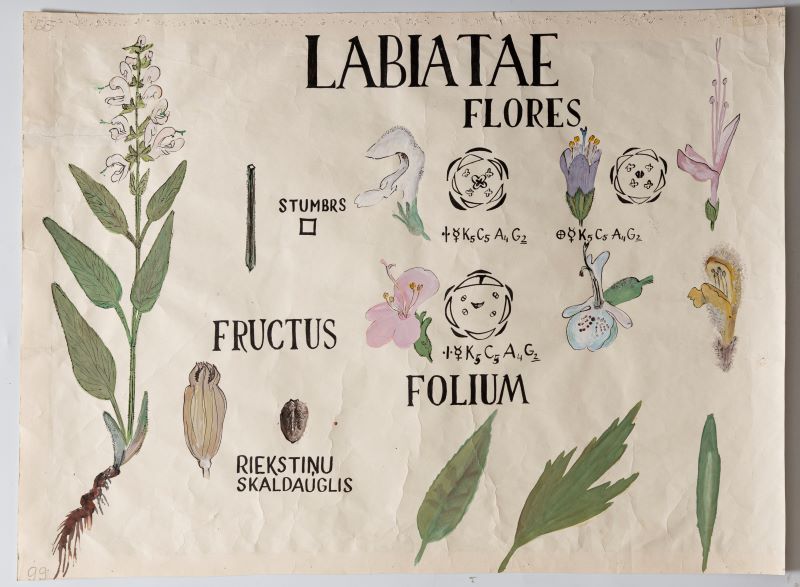New exhibition by RSU History Museum displayed in glass cases by the Great Hall
From 9 January to 21 March 2025, the Rīga Stradiņš University (RSU) History Museum is presenting the exhibition 'Academic. Talented. Creative' in the glass cases outside the Great Hall.
Learn about unusual objects once used in the RSU study process that are now included in the Museum's collection. Each of them depicts an aspect of how studies or work are organised. They testify about the creativity and ingenuity of students and lecturers, their patience, the way they organised their work, acquired simulation-based skills and other important endeavours. All the objects in the exhibition were once invented and created by the students and lecturers themselves.
As an example, here is a story about educational posters used in pharmacognosy classes:
 Photo: Courtesy of the RSU History Museum
Photo: Courtesy of the RSU History Museum
‘40-60 years ago, various teaching aids produced in the USSR, like typographically printed posters, were available for pharmaceutical studies, but didn’t contain a lot of information. They were therefore not usually used in lectures and classes. Asst. Prof. Edita Romāne told us that the teaching aids were often made by students.
In the 1970s-1980s, it was compulsory for all students to engage in research or in a learning research project. In most cases, this involvement was formal, but to participate in research project competitions or to receive credit points for their work, students did sometimes participate in designing and producing teaching materials such as posters. The student could choose a proposed poster themes to prepare and talk through with their lecturer what should be drawn. Sometimes the students themselves had to figure out how to visualise the plants better.
Some of the posters were made in the second half of the 1960s and the first half of the 1970s by Lilija Blumberga, a laboratory assistant at the department, but the rest were made in the second half of the 1970s and even until 1987 by students. The posters were always signed by the author, yet these signatures were not preserved, as the posters were extensively used in the study process until around 2010, and some even longer.
Each time, the poster was stapled to wooden slats for the specific class or lecture and then taken off again to be stored as compactly as possible. Gradually, the edges of the posters became very wrinkled and had to be cut off due to the pins. When it was no longer possible to cut the edges so that the image on the poster would not be damaged, the edges were treated with glue. Thus, the reference to who created them has been lost.’




